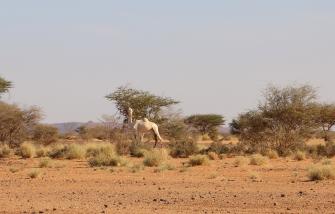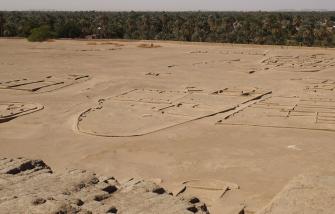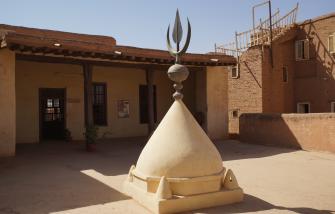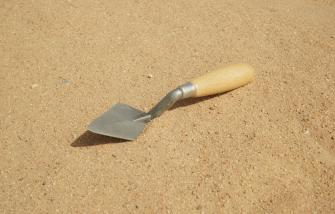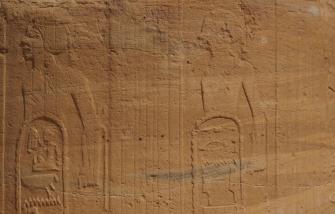The Bayuda Desert is the area south of the Great Bend of the Nile. Archaeological evidence shows that the Bayuda has seen human occupation from the Old Stone Age through almost all periods of history. Read more ...

300,000 to 5000 BC
Old and Middle Stone Age
The earlist archaeological finds from Sudan are probably more than 300,000 years old. They are handaxe type stone tools discovered from a handful of sites between Khartoum and the Sudanese-Egyptian border. They are notoriously hard to date, so their age is still subject to debate. They are characertistic of the older phases of the Old Stone Age.
Sites and find inventories get more numerous and diverse for the following periods from about 250,000 to 7,500 BC. One thing Sudan is not rich in is human fossils. The only early human remain from the region is the so-called Singa skull, named after it findspot, Singa, on the Blue Nile, about 350 kilometres south of Khartoum. It has been dated to about 130,000 BC and represents an early specimen of homo sapiens.
A pivotal period is the ensuing Middle Stone Age, or Mesolithic, dating from about 7,500 to 5,000 BC. In this era, people still lived by hunting and gathering. But they were very good at exploiting the natural resources and started to stay in one place for at least part of the year. One famous settlement was discovered at the premises of the Civil Hospital at Khartoum, near the confluence of the White and the Blue Niles.
Mesolithic people exploited the aquatic resources of the Nile, both in terms of fish and shells. Their material inventory included objects which are interpreted as net sinkers. Another important technological development, paving the way for a completely new lifestyle was the invention of pottery. Sherds with the characteristic decoration of this period can frequently be found at the desert edges and at later sites.
The Mesolithic people buried their dead in the settlements and in the first cemeteries known from the Nile valley. Burial grounds of this period were found in the vicinity of Kerma and in Lower Nubia, the latter of which are now under the waters of Lake Nasser.
